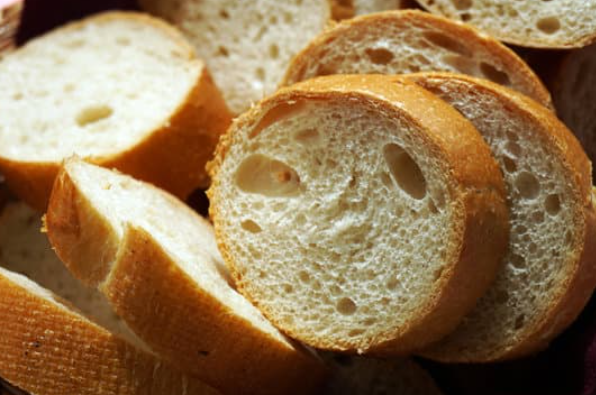Why did my baguette split? Here’s the answer!

What To Know
- In the case of baguettes, the long, thin shape creates a situation where the gas bubbles have a limited space to expand.
- The ideal proofing time depends on the temperature and humidity of your kitchen, but as a general rule, it should be around 1.
- If the dough is too wet, it will be more difficult to handle and shape, and it’s more likely to split.
Baguettes, those long, crispy French loaves, are a staple in many kitchens. However, achieving that perfect crusty exterior and soft, chewy interior can sometimes be a challenge. One common issue home bakers face is baguette splits. These unsightly cracks can ruin the aesthetics of your baguette and affect its texture. If you’ve ever wondered, “Why did my baguette split?”, this blog post will delve into the reasons behind this baking conundrum.
The Science Behind Baguette Splitting
To understand why baguettes split, we need to delve into the science of bread baking. When yeast is added to dough, it consumes the sugars and produces carbon dioxide gas. This gas creates bubbles in the dough, which expand during baking, giving bread its characteristic rise. In the case of baguettes, the long, thin shape creates a situation where the gas bubbles have a limited space to expand. As a result, they exert pressure on the dough, causing it to split.
Common Causes of Baguette Splits
1. Insufficient Scoring:
- Scoring is the process of making shallow cuts in the top of the baguette before baking. This allows the gas to escape more easily, preventing it from building up and causing splits. If you don’t score your baguette deeply enough or at the right angle, it’s more likely to split.
2. Over-Proofing:
- Proofing is the process of allowing the dough to rise before baking. Over-proofing can lead to a weak dough structure that is more prone to splitting. The ideal proofing time depends on the temperature and humidity of your kitchen, but as a general rule, it should be around 1.5 to 2 times the original size of the dough.
3. Incorrect Baking Temperature:
- Baguettes require a high initial baking temperature to create steam and promote a quick rise. This helps to set the crust and prevent the baguette from splitting. However, if the oven temperature is too high for too long, the crust can become too hard and brittle, making it more likely to split.
4. Improper Shaping:
- The way you shape your baguette can also affect whether it splits or not. The dough should be rolled out evenly and tightly, with no air pockets. If the dough is too loose or uneven, it’s more likely to split during baking.
5. Uneven Hydration:
- The hydration level of the dough is another important factor. If the dough is too wet, it will be more difficult to handle and shape, and it’s more likely to split. On the other hand, if the dough is too dry, it will be difficult to develop gluten, which can also lead to splitting.
Tips to Prevent Baguette Splits
1. Score Properly:
- Make sure to score your baguette deeply enough (about 1/2 inch) and at a 45-degree angle. This will allow the gas to escape easily and prevent splits.
2. Proof Carefully:
- Pay attention to the proofing time and don’t over-proof the dough. The dough should be about 1.5 to 2 times its original size.
3. Control the Baking Temperature:
- Start with a high initial baking temperature (450°F to 475°F) to create steam and promote a quick rise. After 10-15 minutes, reduce the temperature to 400°F to finish baking.
4. Shape Properly:
- Roll out the dough evenly and tightly, making sure there are no air pockets. The dough should be shaped into a long, thin cylinder.
5. Maintain Proper Hydration:
- Aim for a hydration level of around 65-70%. This will ensure that the dough is easy to handle and shape, and it will help prevent splitting.
Troubleshooting Split Baguettes
If your baguettes are consistently splitting, here are some troubleshooting tips:
- Check the Scoring:
- Make sure you’re scoring the baguettes deeply enough and at the right angle.
- Adjust the Proofing Time:
- If the baguettes are over-proofed, reduce the proofing time. If they’re under-proofed, increase the proofing time.
- Control the Oven Temperature:
- Make sure you’re starting with a high initial baking temperature and then reducing it after 10-15 minutes.
- Improve the Shaping Technique:
- Practice rolling out the dough evenly and tightly, making sure there are no air pockets.
- Adjust the Hydration Level:
- If the dough is too wet or too dry, adjust the hydration level accordingly.
Baking Baguettes Requires Patience and Practice
Remember, baking baguettes is an art that requires patience and practice. Don’t be discouraged if your first few attempts don‘t turn out perfectly. With time and experience, you’ll be able to master the technique and create beautiful, crusty baguettes that are sure to impress.
Answers to Your Most Common Questions
1. Why do my baguettes split on the bottom?
- This is likely due to insufficient scoring. Make sure to score the baguettes deeply enough, especially on the bottom, to allow the gas to escape.
2. Why do my baguettes split in the middle?
- This could be due to over-proofing, incorrect baking temperature, or improper shaping. Check your proofing time, adjust the baking temperature, and make sure you’re rolling out the dough evenly and tightly.
3. Why do my baguettes split after baking?
- This is usually caused by an uneven crumb structure. Make sure you’re mixing and kneading the dough properly to develop a strong gluten network.





